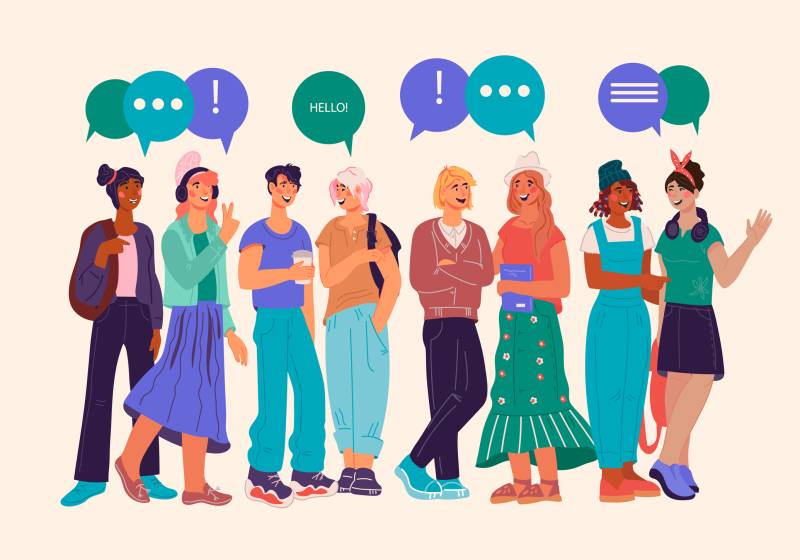While he makes sure to show interest in what his students are saying, Kay also engages in playful banter when he recognizes a term from his generation being used incorrectly by his students. “I’m 40 years old, and I’m from Philly and from some of the same neighborhoods that the kids are from. And I’ll teach them. I’ll say, ‘Hey, you’re using that word wrong,” he said. According to Kay, scholars recognize the evolution of language. “Shutting scholarship down and banning the mechanism [of language acquisition]” is not a solutions-oriented approach, he said.
While Wright acknowledged that educators have the freedom to determine what is and isn’t allowed in their learning environments, “those boundaries can’t cut across someone’s identity,” she said.
Learning through shared language
Wright said she supports the use of comparative language exercises in the classroom, where students are asked to find equivalents for a slang word they might use, like the word “bruh,” and explain those equivalencies and why they matter. Rather than assigning this task as a punitive measure to prohibit certain language in the classroom, the educator and students can engage in shared language and learn from the diversity of language around them.
Depending on the learning level and age group of students, educators can also address appropriateness and flexibility of language with students by using what Wright calls the tools metaphor. A student might use language like a screwdriver, but in some cases when it comes to school you might need to use language like a hammer. By reinforcing the idea that different tools can be used in different ways and often simultaneously, students’ language variation can be celebrated.
Bond incorporates chances for her students to explore their own use of language in classroom exercises, such as her start-of-semester check-in when she asks students to write about themselves in a language that feels comfortable. They also get a chance to see their language as canonical when Bond assigns them 10 minutes of free writing, which she doesn’t grade or review.
Kay includes a memoir unit for his ninth graders, in which they cover topics like language, names and religion. During this unit he teaches students about the evolution of language and the differences between dialect, jargon and slang. Instead of banning certain uses of language, he encourages students to approach language differences and evolution within their assignments and classwork.
This year, Kay introduced the use of footnotes to his students if they use a phrase or word in their memoirs that their audience might not understand or recognize. “It’s all about the audience. There’s nothing wrong with that language, but will your audience understand it?” Kay said.
Kay, who used to teach drama, recommended improv activities like having students act as translators to their peers’ selected use of a slang or dialectal term. The “translators” are asked to say the phrase or term for a different audience, which Kay said his students enjoy doing.


